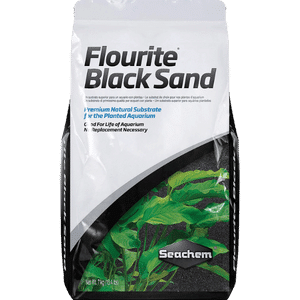The Best Substrate for Betta Fish
Discover the best substrate for Betta fish with our expert guide. Find top picks for health & aesthetics, and make an informed choice. Dive in to learn more
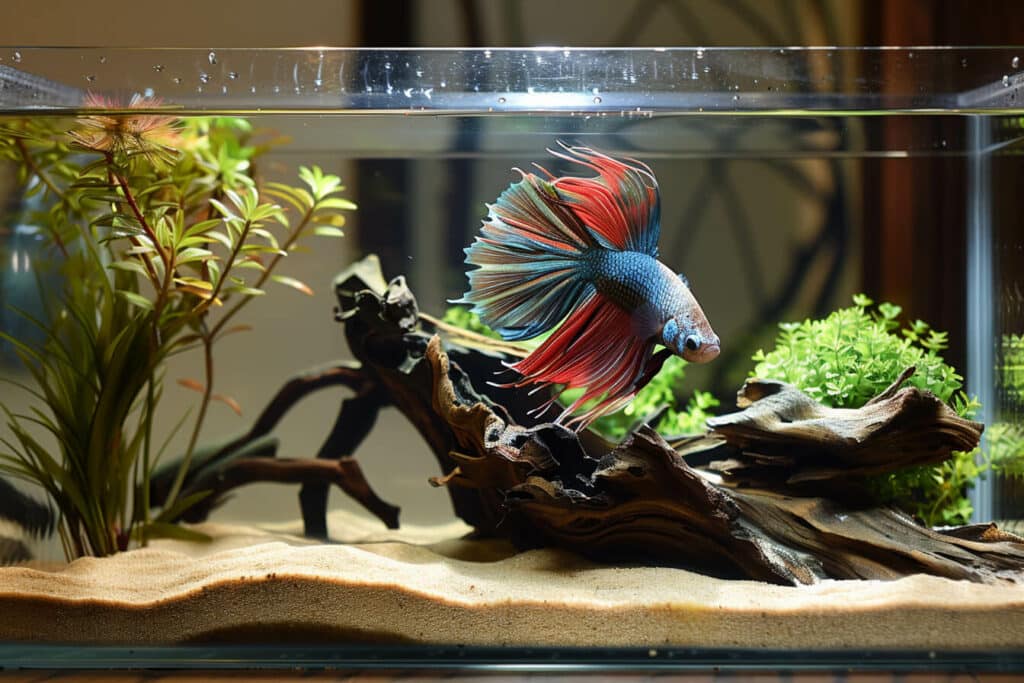
Table of Contents 🦑
Betta Fish and Their Natural Habitat
Betta fish, also known as Siamese fighting fish, originate from Southeast Asia, where they inhabit shallow, vegetated waters such as rice paddies, ditches, ponds, and swamps.
The substrate in their natural habitat consists of muddy silt and rotted plantation, with bettas often using leaves as a bed to rest. Creating a similar environment in your betta tank promotes your fish’s well-being by making them feel comfortable and secure.
There are several types of substrates that can be used in betta tanks, including sand, gravel, and soil, each with its own set of advantages and disadvantages.
Key Takeaways
The best substrate for betta not only enhances aquariums visual appeal but also plays a crucial role in maintaining a healthy environment for your betta fish.
- Create a natural habitat for betta fish that replicates their native environment to promote well-being.
- Consider various substrates – sand, gravel, aqua soil, etc. – and choose the best substrate for betta, based on tank size, plant requirements, and pH levels.
- Enhance betta health with suitable substrate installation & maintenance while avoiding common mistakes.
Flourite Black Sand Boosts Plant Growth & Betta Health in Your Aquarium
The Best Types of Substrates for Betta Fish
The most commonly used substrates for betta tanks:
- Sand.
- Gravel.
- Aqua soil.
- Marbles & River stones.
- Betta Beads.
Each type of substrate has its own set of advantages and disadvantages, and it’s essential to choose the one that best suits your betta fish and their tank setup.
Let’s examine the specifics of each natural substrate type and determine how much substrate is needed.
Sand Substrate for Betta
Sand substrate can create a natural-looking environment, imitating riverbeds or lakes, and providing a comfortable surface for betta fish to rest and explore. Nevertheless, it’s vital to use aquarium sand specifically tailored for betta tanks, as certain types of sand, like coral sand, can negatively affect water chemistry and may not be suitable for freshwater aquariums.
One of the advantages of using sand substrate is its smooth texture, which is gentle on betta fish’s delicate fins and allows them to dig and build nests. On the other hand, sand substrates may require more maintenance than other substrates, as they can compact over time and potentially affect water flow and oxygenation. Using a gravel vacuum to agitate and remove fish waste and detritus without siphoning the sand itself is advised to keep the sand clean.
A popular choice for sand substrate in betta tanks is CaribSea Super Naturals Aquarium Sand, which offers a natural look, soft and pH-neutral grains, and fine-grained texture. Thoroughly rinsing the sand before adding it to your tank is crucial to prevent cloudiness and foster a healthy environment for your betta fish.
Gravel Substrate for Betta
Gravel substrate is a popular choice for betta tanks, as it is lightweight and promotes the growth of beneficial bacteria. Additionally, gravel is available in various colors and sizes, allowing you to create an aesthetically pleasing environment for your betta fish. However, when choosing a gravel substrate, it’s essential to select a smooth variant to prevent fin damage, as sharp or rough gravel can harm your betta fish.
One downside to aquarium gravel substrate is that it can trap dirt and debris, making it more challenging to clean than sand substrate. Using a gravel vacuum to remove accumulated wastes is pivotal to upholding a healthy environment, as leaving waste material in the tank can lead to increased ammonia levels.
A recommended gravel substrate for betta tanks is pea gravel, which is safe and suitable for betta fish due to its rounded edges and smooth texture. Other options include Seachem Flourite Black Sand, which is composed of porous clay and functions as an additional biological filter by providing increased surface area for bacteria colonization.
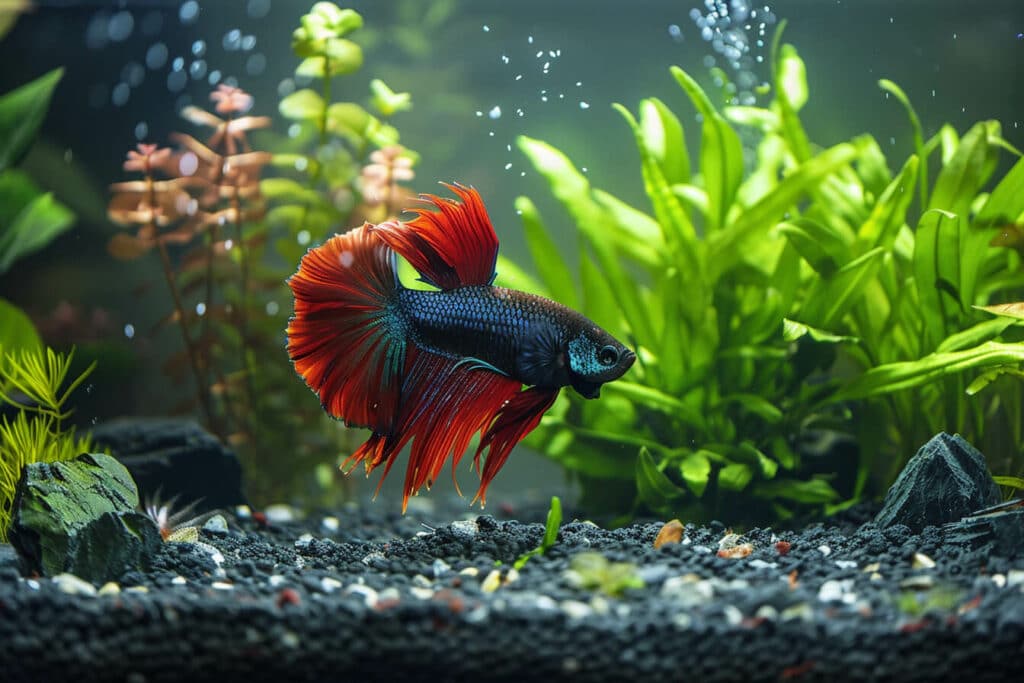
Aqua Soil Substrate
Aqua soil substrate is a specialized substrate designed for planted betta tanks, as it is rich in nutrients and minerals that promote the growth of live plants. This type of substrate can be particularly beneficial for betta tanks with a heavy plant load, as it provides essential nutrients and helps maintain an acidic environment in the water.
However, aqua soil substrate can be more expensive than other substrates, and it may require a waiting period for ammonia to dissipate before it is safe for your betta fish. Cycling the tank for a few weeks to establish a colony of beneficial bacteria and planting aquatic plants abundantly from the start is fundamental to ensure a healthy environment.
A popular choice for aqua soil substrate is ADA Amazonia Aqua Soil, which is specifically designed for planted tanks and features rounded edges to ensure the safety of your betta fish. Although it may not be considered fish-safe for several weeks from initial setup, it is well-received by betta tank owners due to its suitability for planted tanks and its ability to maintain a low pH in a planted aquarium.
Marbles and River Stones
Marbles and river stones can be used as decorative substrates in betta tanks, providing an attractive and unique appearance. However, they may not offer the same benefits as sand or gravel substrates, such as promoting the growth of beneficial bacteria and supporting live plants.
One of the main disadvantages of using marble as a substrate is that it can be difficult to clean and does not provide any advantages for betta fish. Uneaten food and debris can become lodged between the marbles, negatively affecting water parameters. Furthermore, they may not be suitable for beginner hobbyists or those keeping wild bettas, as they do not replicate the natural environment of betta fish.
When considering using river stones as a substrate, it’s essential to ensure that they have no sharp edges and have been tested for inertness to avoid altering the water chemistry. It’s also important to remember that introducing stones or rocks from outside to your betta tank carries the risk of introducing unknown substances or contaminants that may affect your fish’s health.
Betta Beads
Betta Beads are a modern substrate choice that combines safety, style, and simplicity for your Betta fish’s home. These smooth, glass-like beads are designed to protect your Betta’s delicate fins and maintain a stable water pH, ensuring their environment is as healthy as it is beautiful. Available in various colors, Betta Beads allow for a customizable aquarium that stands out without compromising on your fish’s well-being. They’re easy to clean and inert, making them a hassle-free option for aquarists of all levels. Remember, choosing the right bead size is crucial to prevent any risks of ingestion, and regular cleaning is essential for a pristine habitat.
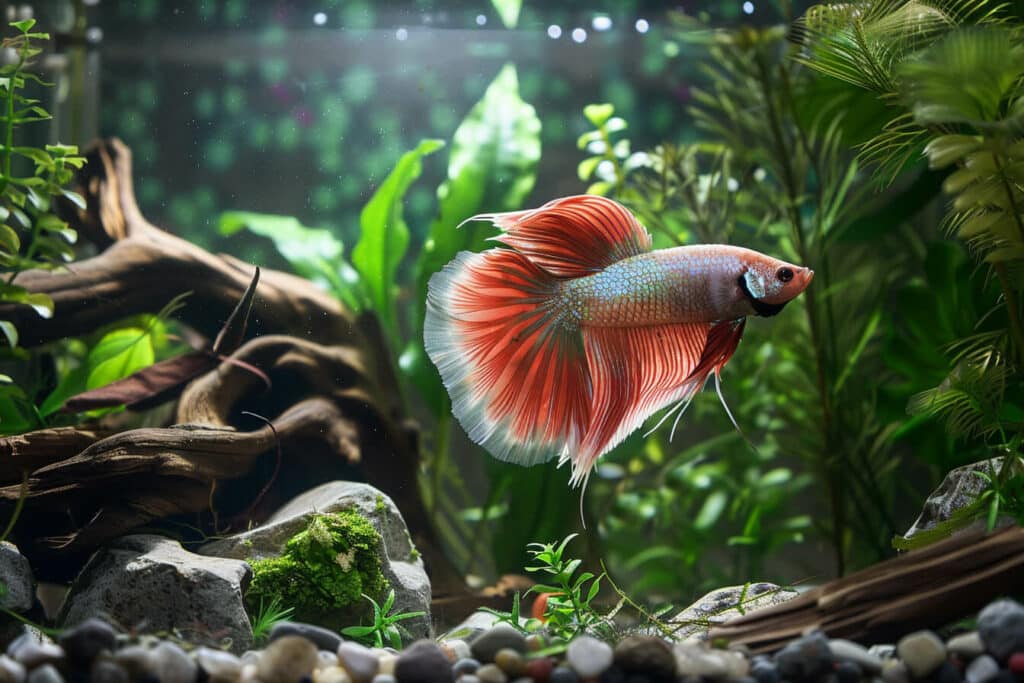
Choosing the Right Substrate for Your Betta Tank
Consideration of factors such as tank size, plant requirements, pH levels, and aesthetics is critical when choosing the appropriate substrate for your betta tank. The natural habitat of betta fish typically consists of shallow, vegetated waters with muddy or sandy bottoms, and replicating this environment in your betta tank is crucial for your fish’s well-being.
The depth of the substrate should also be considered & It’s also important to ensure that the substrate does not contain any sharp edges and is safe for your betta fish, as rough or sharp materials can pose risks such as injury, irritation, and stress.
Thorough consideration of these factors will enable you to create a comfortable and healthy environment for your betta fish to thrive.
Superb for the health of your betta fish, Best way to create a natural and tropical environment
Proper Substrate Installation and Maintenance
Correct installation and maintenance of substrates play a vital role in sustaining a healthy environment for your betta fish. Before adding substrate to your tank, it’s important to rinse it thoroughly to prevent cloudiness and ensure a clean environment for your fish. The recommended substrate depth varies depending on the size of your betta tank and whether it is planted or not.
Frequent cleaning of your substrate to remove fish waste and detritus is key as accumulated waste in the tank can elevate ammonia levels, leading to potential health issues for your betta fish. The cleaning method may vary depending on the type of substrate used. For sand substrates, a gravel vacuum should be used to stir up and remove waste without sucking up the sand itself. For gravel substrates, immerse the gravel vacuum tube until it reaches the bottom of the tank to effectively remove accumulated wastes.
Monitoring and maintaining stable water parameters, including pH levels, is also an essential part of substrate maintenance. Ensuring a healthy and comfortable environment for your betta fish is possible through proper installation and maintenance of your substrate.
Avoiding Common Substrate Mistakes
Avoiding common substrate mistakes is crucial to ensure the health and well-being of your betta fish. One such mistake is using sharp or rough materials as substrates, which can harm your betta fish and cause injury, irritation, and stress. Always choose a smooth and gentle substrate that is safe for your betta fish, such as sand or pea gravel.
Another mistake to avoid is using an unsuitable substrate type, such as fine sand or coral sand, which can negatively affect the water chemistry of your betta tank. Instead, opt for substrates specifically designed for betta fish tanks, such as aquarium sand or gravel, or specialized aqua soil for planted tanks.
Lastly, ensure that you properly clean and maintain your substrate to prevent the buildup of waste material and potential health issues for your betta fish. Regular cleaning coupled with routine monitoring of water parameters will facilitate the maintenance of a healthy and comfortable environment for your betta fish, enabling them to thrive and enjoy a long, contented life.
Summary
Choosing the right substrate for your betta fish tank is a crucial aspect of maintaining a healthy and comfortable environment for your fish.
By understanding their natural habitat, considering various substrate types and their pros and cons, and following proper installation and maintenance guidelines, you can ensure that your betta fish live a long and happy life. So, embark on this rewarding journey of creating the perfect home for your betta fish, and enjoy the beauty and tranquility they bring to your space.
FAQ
Q: Do betta fish need specific gravel?
A: Gravel is a great choice for betta fish since it is effective and easy to clean. Neutral-colored gravel is best as it will help reduce stress and won’t compete with the color of your Betta or other fish in the aquarium.
Q: What is the natural habitat of betta fish?
A: Betta fish originate from Southeast Asia, where they inhabit shallow, vegetated waters such as rice paddies, ditches, ponds, and swamps, with muddy silt and rotted plantations as their natural habitat.
Q: What are the main types of substrates for betta fish tanks?
A: Common substrates for betta tanks include sand, gravel, aqua soil, marbles, and river stones.
Q: How do I clean sand substrate in my betta fish tank?
A: Clean sand substrate in your betta fish tank by using a gravel vacuum, stirring up fish waste and detritus approximately one inch above the sand’s surface without vacuuming the sand itself.
How do I properly install and maintain the substrate in my betta fish tank?
A: To ensure a healthy environment for your betta fish, rinse the substrate thoroughly before adding it to your tank and regularly use a gravel vacuum to clean the substrate and remove waste material. Monitor water parameters to maintain a healthy environment.

Delighted to have you here at BettaReef! This place is a treasure trove of knowledge about Betta fish, Betta Care, Health, Gear, and much more from the wonders of aquatic life. My journey in this fascinating world began when I was just 8, and now, as a seasoned hobbyist, I’m here to help fellow Betta enthusiasts create a thriving Betta environment for a healthy life.
I’m committed to delivering high-quality content, backed by a stringent editorial process. Each product review is based on real-life usage and practical analysis, ensuring that you get insights and advice that truly matter.
Related Blog Posts:
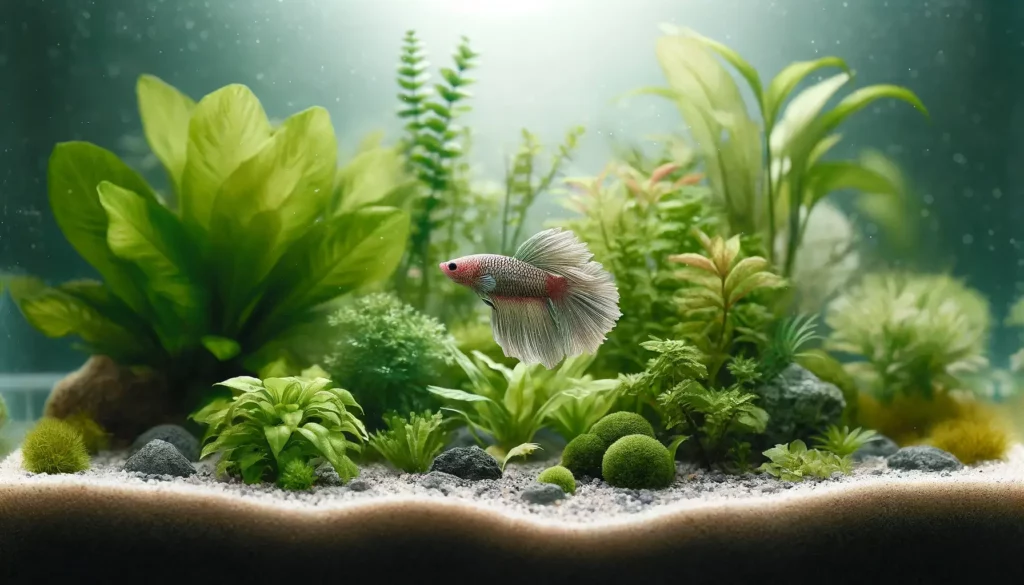
Top 5 Best Gravel For Betta Fish
Top 5 Best Gravel For Betta Fish Find the best gravel for betta fish with

The Best Substrate For Betta Fish
The Best Substrate for Betta Fish Discover the best substrate for Betta fish with our
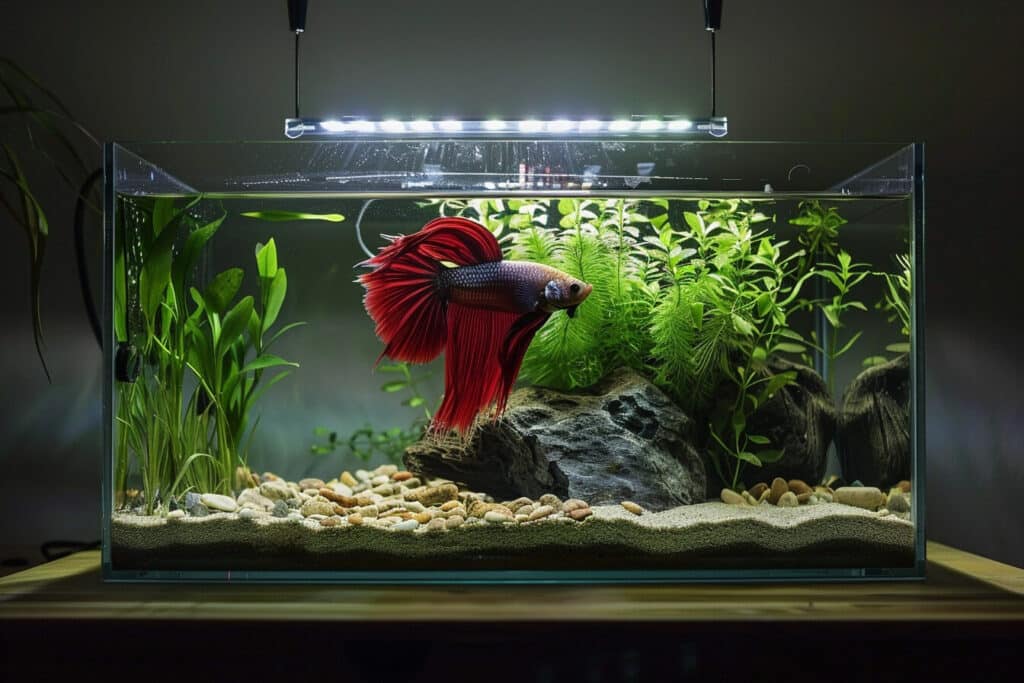
Do Betta Fish Need Light? How to Perfect Your Pet’s Environment
Do Betta Fish Need Light? How to Perfect Your Pet’s Environment Do Betta Fish Need

